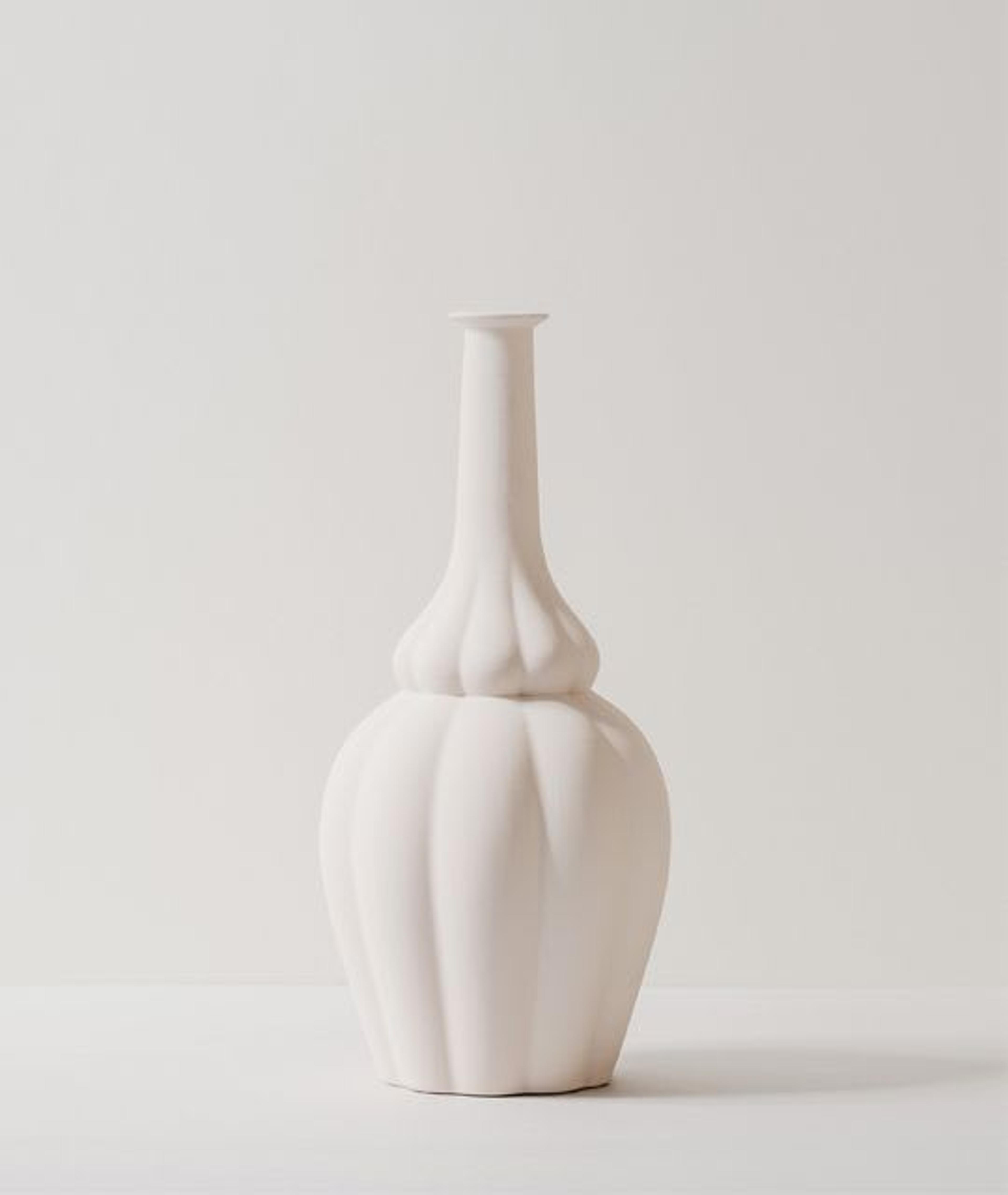
Morandi Inspired Ceramics
An in depth analysis of artist Giorgio Morandi, exploring the forms, colors, and compositions of his productions brought Sonia Pedrazzini to conceive Le Morandine. A stunning collection of ceramic pieces that recall the art works of the renowned still life Italian artist and that aim at bringing the viewer closer to Morandi’s complex artistic path.
When did you first come up with the idea for Le Morandine collection?
I first started thinking about this project in 1999. A company asked me to create a series of candles that also worked as centerpieces. While considering all the objects that are usually found on a table, such as vases, bottles, pitchers, and bowls, I immediately pictured Giorgio Morandi’s still life paintings. I was inspired by the thought of everyday life that becomes art and it seemed like going from the painting to a three-dimensional reality was an interesting path to follow.
The project remained only an idea till 2009, when I decided to self-produce it. Le Morandine started first as a collection of candles and then became a series of vases and bottles in ceramic. During the hiatus between the conception and the realization of the project, I had time to analyze in depth the artist Morandi and his production, exploring forms, colors, and compositions and ending up with a visual and photographic code. I keep working on it, experimenting with other materials very much the way Morandi did: with a slow and continue evolution. I never stop researching.
How would you consider Le Morandine projects in the contemporary design landscape?
I believe that this work is difficult to label. First and foremost, it is a personal research. It is also a musing over Morandi’s opus, but it is not just that: it touches various fields like art, design, craftsmanship, home décor, and photography. It involves re-imagining and repeating, but also finding differences. I conceived these objects mainly with the intention of encouraging a relationship between them and their owner. I designed them hoping in their emotional potential of bringing the viewer closer to Morandi’s complex artistic path. When that happens, it makes me very happy because it allows people to become part of a larger process. These vases never cease to surprise me. They become alive. They possess a uniqueness that comes from originality and the intuition innate in a work of art. To answer the question, in this way maybe Le Morandine vases could be placed, within the contemporary design landscape, among relational and emotional objects.
What fascinates you about still life?
A still life, even though it appears fixed in a definite position, is a very vital process. It involves movement, research, awareness, thought, and choice. Morandi considered his bottles and objects as real characters and he would move them every day, much like a director moves his actors on a stage. Because of this, his paintings are not just traditional still life paintings, but capture an instant in the flow of life’s events. I am fascinated by this aspect, which is dynamic, almost cinematic. It is not natura morta [still life in Italian translates literally as “dead nature”], because it is filled with life!
You have chosen ceramics. What do you think about ceramics renaissance and in what way a material linked to mid-20th century is current today?
Ceramics is a ductile material. It is ancient and universal and it will never stop being a part of our everyday life. I don’t think that we can really talk about ceramics renaissance, but finally Italy is giving this incredible material more importance and more visibility. It belongs to both our everyday life and the most advanced technology and it was a protagonist in our art history. Ceramics is a veritable engine of our economy and it is also a splendid means to express new and original aesthetics.
The theme behind Le Morandine, which is Morandi’s work, is current for several reasons: the reference to it as an active form of knowledge; the Italian nature of my work that claims back an aspect of our cultural identity; the connection ever so close between art and design; and finally the fact that Morandi’s paintings, even though they might appear “classic”, follow a serial logic that is completely contemporary. My objects try to convey this quality and make it available to everybody.
Latest Posts

The Artisan
The Heart and Soul of Italian Textile Craftsmanship
Born from the Sali family’s passion for fine textiles in the late 1950s, Biancoperla embodies over…

The Artisan
Transforming Italian Tableware into Art and Emotion
Italian artist and ceramist Coralla Maiuri transforms porcelain into dreamscapes of light, sky, an…








